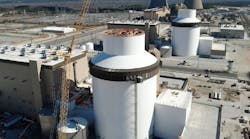Falling cost of solar photovoltaic (PV) generated electricity has led to a rapid increase in the deployment of PV and projections that PV could play a significant role in the future U.S. electric sector. The solar resource itself is virtually unlimited compared to any conceivable demand for energy (Morton 2006); however, the ultimate contribution from PV could be limited by several factors in the current grid. One is the limited coincidence between the solar resource and normal demand patterns (Denholm and Margolis 2007a).
A second is the limited flexibility of conventional generators to reduce output and accommodate this variable generation resource. At high penetration of solar generation, increased grid flexibility will be needed to fully utilize the variable and uncertain output from PV generation and shift energy production to periods of high demand or reduced solar output (Denholm and Margolis 2007b).
Energy storage provides an option to increase grid flexibility and there are many storage options available or under development.1
Both PV and CSP use solar energy to generate electricity, although through different conversion processes. A key difference between CSP and PV technologies is the ability of CSP to utilize high-efficiency thermal energy storage (TES) which turns CSP into a partially dispatchable resource. In this work we consider a technology now beginning to be deployed at scale – thermal energy storage (TES) deployed with concentrating solar power (CSP). PV and CSP are both deployable in areas of high direct normal irradiance such as the U.S. Southwest. From a policy standpoint, a simplistic approach to choosing a generation technology might be based simply on picking the option with the lowest overall levelized cost of electricity (LCOE). However, deployment based simply on lowest LCOE ignores the relative benefits of each technology to the grid, how their value to the grid changes as a function of penetration, and how they may actually work together to increase overall usefulness of the solar resource.
In this work we examine the degree to which CSP may be complementary to PV via its use of thermal energy storage. We first review the challenges of PV deployment at scale The addition of TES produces additional value by shifting solar energy to periods of peak demand, providing firm capacity and ancillary services, and reducing integration challenges. Given the dispatchability of CSP enabled by thermal energy storage, it is possible that PV and CSP are at least partially complementary. The dispatchability of CSP with TES can enable higher overall penetration of solar energy in two ways. The first is providing solar-generated electricity during periods of cloudy weather or at night. However a potentially important, and less well analyzed benefit of CSP is its ability to provide grid flexibility, enabling greater penetration of PV (and other variable generation sources such as wind) than if deployed without CSP...(read more...)

